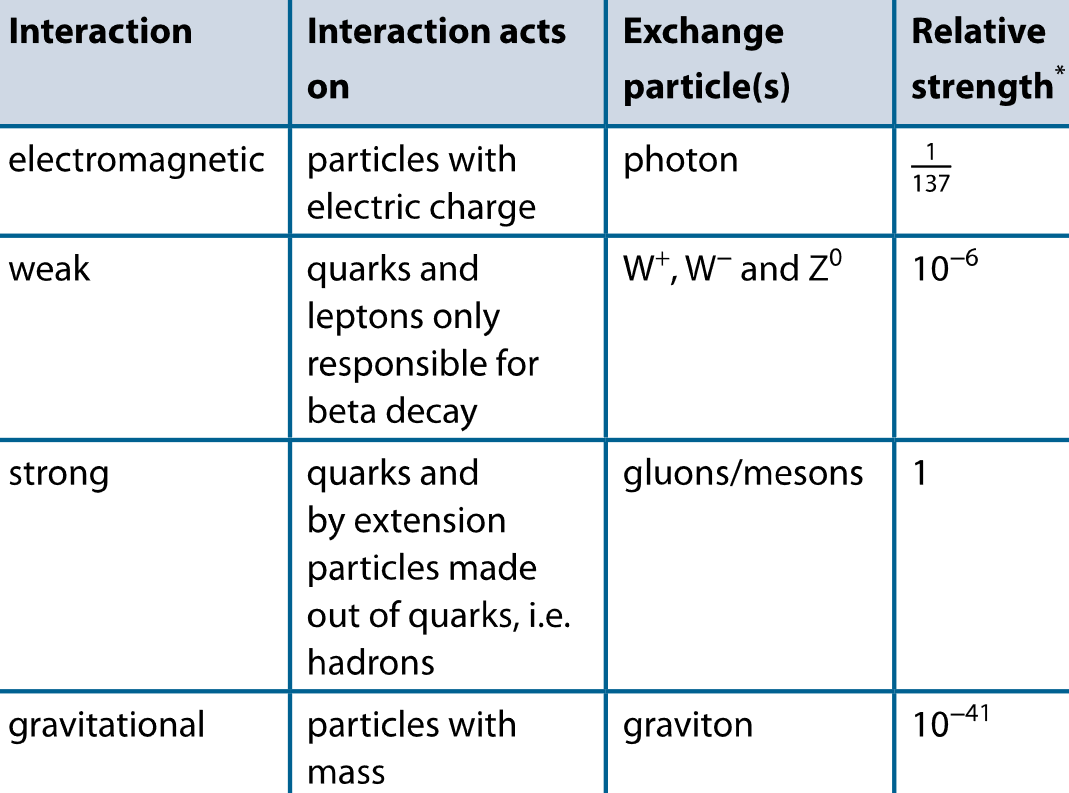We define four fundamental forces (also called field forces) in physics:
- The electromagnetic interaction, acting on any particle that has electric charge. Force is given by Coulomb’s law, with an infinite range.
- The weak interaction, which acts on protons, neutrons, electrons, and neutrinos to cause beta decay, with a very short range ( metres).
- This is mainly because within the nucleus, , which overpowers Coulomb’s law at short ranges but is itself overpowered at higher ranges.
- The strong interaction, a mainly attractive force that acts on protons and neutrons to keep them bound to each other inside nuclei, with a short range ( metres).
- The gravitational interaction, which is the force of attraction between masses. This is largely irrelevant for particle physics, but has infinite range.
We also note that the electromagnetic and weak interactions are actually two sides of one force, the electroweak interaction.1
 We can represent interactions between elementary particles using Feynman diagrams.
We can represent interactions between elementary particles using Feynman diagrams.
Footnotes
-
From Physics for the IB Diploma by K.A. Tsokos. ↩